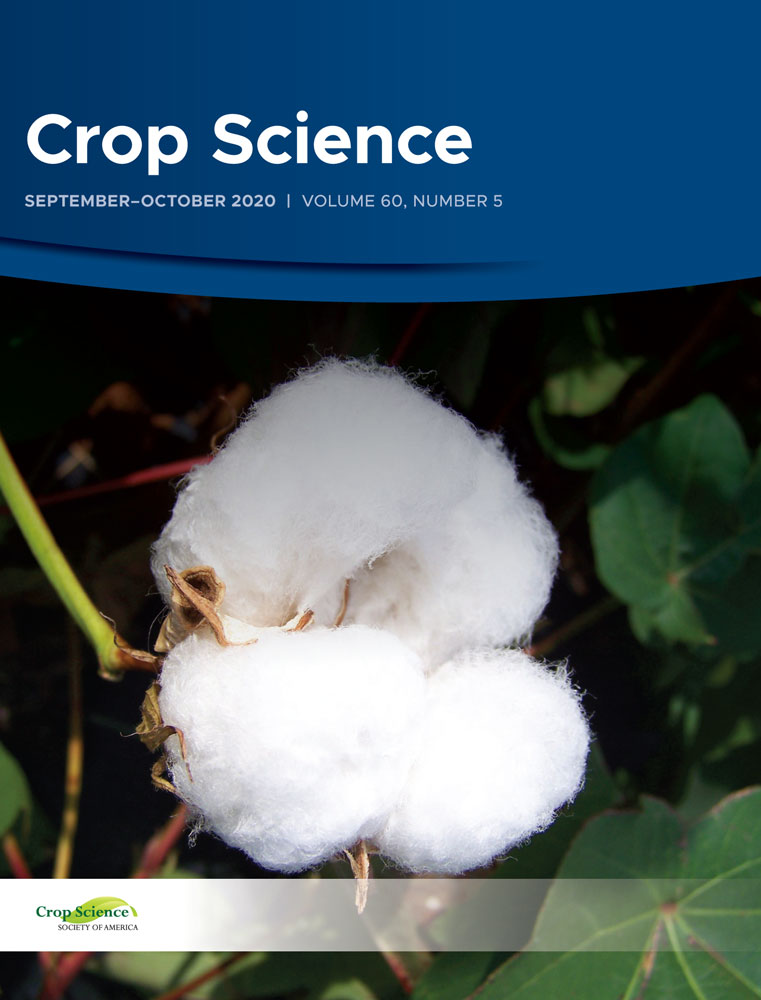Ver ítem
- xmlui.general.dspace_homeCentros e Institutos de InvestigaciónCIAP. Centro de Investigaciones AgropecuariasInstituto de Fisiología y Recursos Genéticos VegetalesArtículos científicosxmlui.ArtifactBrowser.ItemViewer.trail
- Inicio
- Centros e Institutos de Investigación
- CIAP. Centro de Investigaciones Agropecuarias
- Instituto de Fisiología y Recursos Genéticos Vegetales
- Artículos científicos
- Ver ítem
Morpho‐physiological traits associated with drought responses in soybean (Glycine max L.)
Resumen
Drought is currently a major constraint to soybean production worldwide and is becoming more widespread due to increased aridity and warmer temperatures in the context of global
climate change. In this context, breeding for soybean varieties more tolerant to drought stress is critical and requires efficient screening techniques. To find traits associated with droughttolerance
in the vegetative stage which are still present at the reproductive stage,
[ver mas...]
Drought is currently a major constraint to soybean production worldwide and is becoming more widespread due to increased aridity and warmer temperatures in the context of global
climate change. In this context, breeding for soybean varieties more tolerant to drought stress is critical and requires efficient screening techniques. To find traits associated with droughttolerance
in the vegetative stage which are still present at the reproductive stage, we
evaluated morphological, physiological, and biochemical traits, in two soybean genotypes contrasting in their response to drought stress. Under drought stress at the vegetative stage, the tolerant A 5009 RG genotype showed higher proline and chlorophyll contents, and early activation of the enzymatic antioxidant system compared with well-watered plants. On the other hand, the sensitive ADM 50048 genotype increased malondialdehyde (oxidative
damage marker) and non-enzymatic antioxidant response under stress. Manipulative field assays under contrasting levels of water availability at the reproductive stage mimicked the
biochemical patterns observed in the greenhouse tests for the sensitive and tolerant genotypes. A principal component analysis of parameters from vegetative and reproductive stages revealed proline and chlorophyll contents as drought-tolerance traits in soybean. We found those traits useful to classify 14 genotypes from the INTA germplasm bank, identifying two new drought-tolerant genotypes (PI548510 and PI200492). We propose proline and
chlorophylls as a useful tool to classify soybean genotypes according to its drought responses in early developmental stages, potentially reducing breeding times.
[Cerrar]

Autor
Guzzo, María Carla;
Costamagna, Carla;
Salloum, María Soraya;
Rotundo, Jose Luis;
Monteoliva, Mariela Ines;
Luna, Celina Mercedes;
Fuente
Crop Science (August 2020)
Fecha
2020-08-26
ISSN
0011-183X
1435-0653 (online)
1435-0653 (online)
Formato
pdf
Tipo de documento
artículo
Palabras Claves
Derechos de acceso
Embargado
 Excepto donde se diga explicitamente, este item se publica bajo la siguiente descripción: Creative Commons Attribution-NonCommercial-ShareAlike 2.5 Unported (CC BY-NC-SA 2.5)
Excepto donde se diga explicitamente, este item se publica bajo la siguiente descripción: Creative Commons Attribution-NonCommercial-ShareAlike 2.5 Unported (CC BY-NC-SA 2.5)

